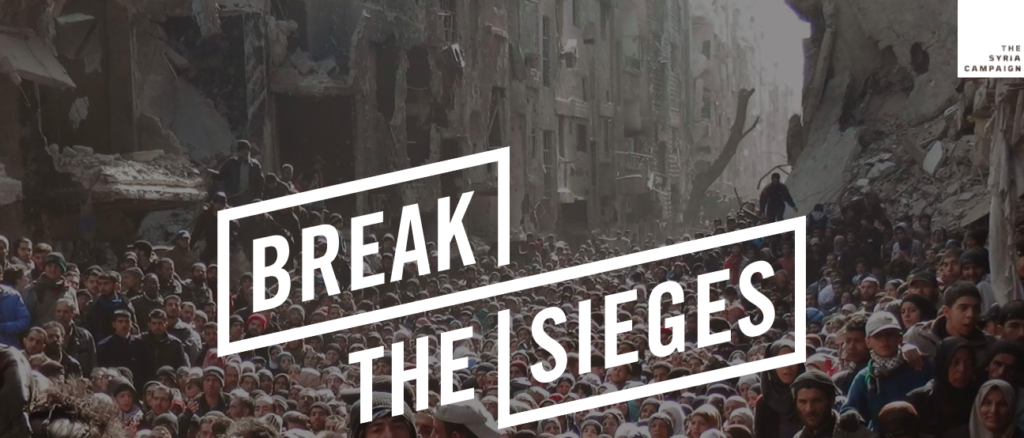Break the Sieges campaign

We launched the Break the Sieges campaign in January 2016, around the time that news was breaking of people starving to death in a small town called Madaya near Damascus. The campaign was a long-term project, which lasted more than two years and which included a whole host of tactics. It was geared toward meeting one goal: increasing global public pressure to break the brutal starvation sieges in Syria.
To prepare for the campaign, we interviewed dozens of people living under siege. This was crucial to understanding life under siege and hearing stories not just of violence and deprivation but hope and innovation too. People living under siege were doing incredible things to survive and to save their communities. Medics were operating using the most basic tools. People were donating blood constantly because there was no electricity to safely store blood plasma. Alternative sources of energy were being used such as solar panels. We gathered these stories and told them on a website. We launched the page in January 2016 with a petition calling on the UN to deliver aid to besieged areas.
At first, people were surprised that our campaign was targeting the UN. Weren’t they “the good guys”? Our interviews with people under siege proved critical to answering this. They told us that the UN was not adequately standing up to the Syrian regime, which was preventing it from delivering aid to their towns. Syrians also said the UN statistics underreported the true number of people living under siege. Although it’s always risky to target people or organisations widely perceived as benevolent, it was imperative that we showcased the voices and demands of people directly affected by the siege.
Community organisations in eastern Ghouta wrote an open letter with their demands to the UN’s then-humanitarian relief chief, Stephen O’Brien. He responded to the letter, helping generate some media coverage. As a result, open letters became an important tactic for activists from siege areas across Syria for years. They helped convey what the community was experiencing and rally public opinion around their demands.
If the UN is the whole world and can’t get a loaf of bread to those children, what is the UN?
Soraya, from Douma
Another critical tactic for campaigning around sieges was the release of statistics. In 2015 PAX and The Syria Institute set up a data collection project called Siege Watch. We worked with them to do a loud release to international media when the number of people estimated to be living under siege hit one million. The story was widely picked up by the media, and even made it to the front page of the UK newspaper the Independent. Being aware of when significant milestones are about to be reached can be helpful to generating attention around a campaign.
Other important tactics in our Break the Sieges campaign were the Taking Sides report, an open letter from women in Daraya, and the campaign for airdrops to Daraya run in collaboration with the late Jo Cox.
What we learnt
It’s important to accurately convey the demands of people directly affected by a crisis. To have an impact, sometimes you need to use many, many tactics over a long period of time